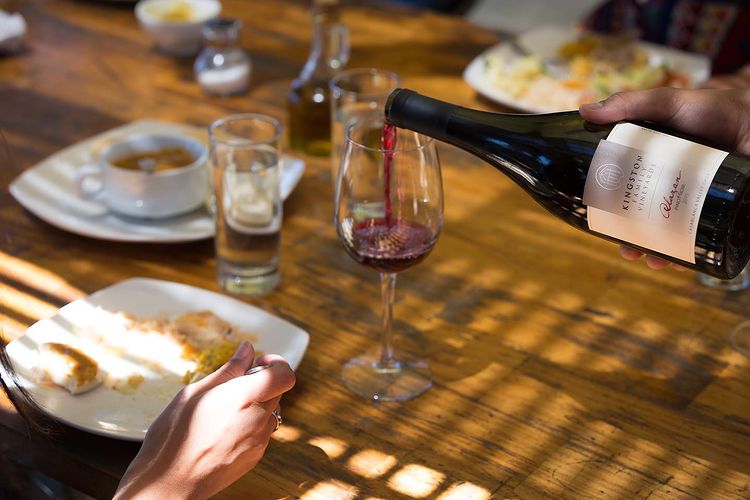
When it comes to Pinot Noir, Courtney Kingston has deep roots—or rather, vines. As the Founder of Kingston Family Vineyards in Chile’s Casablanca Valley, Courtney carries on her family’s farming, winemaking and pioneering history with passion. We talked with Courtney about her enchanting winery, how to find your favorite Pinot and what makes “the heartbreak grape” so special.
Related Content: Wines of the world
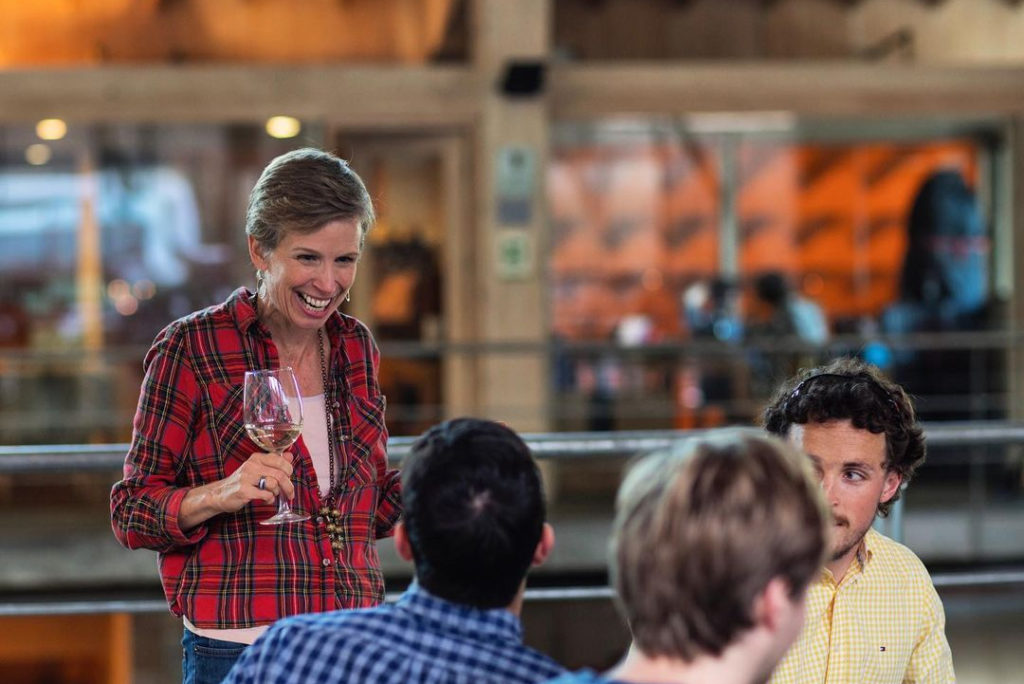
@kingstonvineyards
The vineyards and winery
Kingston Family Vineyards offers private, reserved tastings at their winery perched on a hillside of the stunning Chilean coastline. The location alone is part of what makes this experience feel like you’ve come across a tucked away treasure. You’ll enter the winery turning onto a dirt road lined with palm trees planted by Courtney’s aunt. Your gaze follows down the grove of trees before “the world opens in front of you,” as Courtney describes. From there you’ll spot the salón, or tasting room, nestled within the hilltop vineyard and, on a clear day, perhaps Mount Aconcagua. As you enter the glass-walled tasting room, you’re treated to an open-air experience with a view of the Andes from the sprawling deck.

@kingstonvineyards
The experience
From a seat on the patio or cozied up near the fireplace, you’ll enjoy a tasting paired with local cheeses and chocolates. Courtney points out that Kingston is a winery offering culinary and wine experiences. They also work with a local cheesemaker for their pairings. Sample a local goat cheese with a Sauvignon Blanc. A cheese with depth paired with a Chardonnay. And chocolates paired with a Pinot Noir and a Syrah. During your tasting, your hosts will share the family legacy. “Everything is tailored to your experience,” Courtney points out. “It’s all in the bottle and in the experience.”
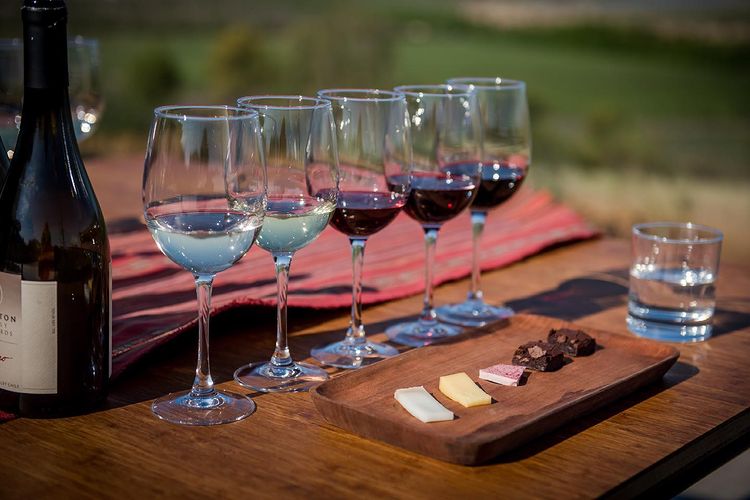
@kingstonvineyards
The history
Kingston Family Vineyards is unique not only in their pioneering vintages but in their family history. Their legacy began in the early 1900s when Carl John Kingston, Courtney’s great-grandfather, set out from Michigan in search of gold in Chile. Carl didn’t strike gold, but his quest did prompt him to establish a cattle ranch on the current site of the winery, just miles from the Pacific. Five generations later, the 350-acre vineyards have yielded bounty and opportunities to harness the Kingston’s pioneering spirit that Courtney and her family still embody. Since 1998, Kingston Family Vineyards has produced organic, artisan, hand-made wines that are enjoyed around the world.
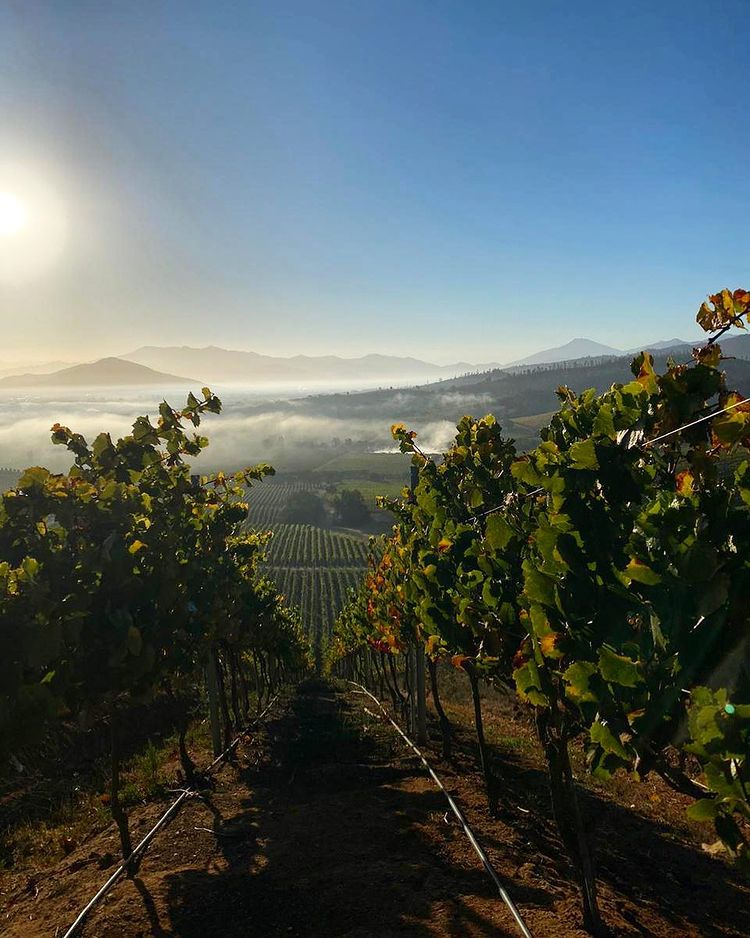
@kingstonvineyards
The “heartbreak grape”
With a climate similar to the Mediterranean or the San Francisco Bay, when Courtney was deciding what types of grapes to grow on the family land, she asked herself, “What could we do that would speak of the farm?” Coming from an entrepreneurial family, she was looking for ways to help the farm and contribute to the community—and to do something a little different. So, she decided on Pinot Noir.
“Pinot was new for Chile. Planting along the coast was new… Pinot is really hard to make. It’s called the heartbreak grape because it’s incredibly finicky and sensitive,” Courtney explains. “Not all grapes are created equal. Some are particular. Pinot Noir is one that always keeps you guessing and speaks of where it’s from.” Courtney compares harvesting Pinot to marathon running, another passion that runs deep in her family. “It’s not the shortest path but it’s well worth it.” Well worth it, indeed. Stanford Business School has since written two case studies on Kingston Family Winery and their entrepreneurial success.
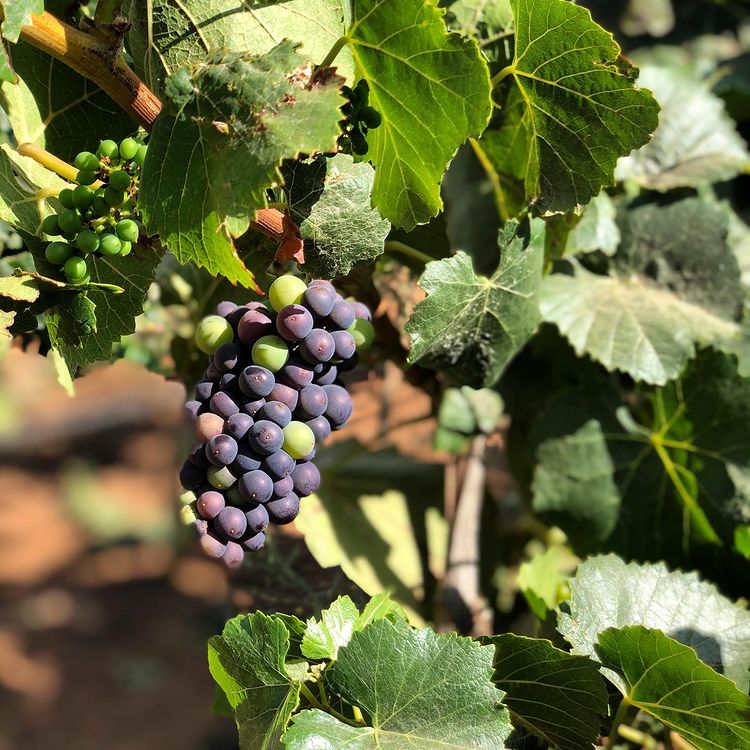
@kingstonvineyards
Kingston Family Vineyard’s Pinot Noir
Kingston Family Vineyards bottles five different Pinots made in different ways. Courtney explains that when you taste wines from different blocks (each block is about one to two acres) side-by-side it “brings home the concept of terroir… a rare experience.” Chile is the tenth largest wine making country in the world. And for a winery to make a small amount by hand as Kingston does presents guests with a real treat. Kingston also ships to your home—so you can continue and share your discoveries with family and friends.
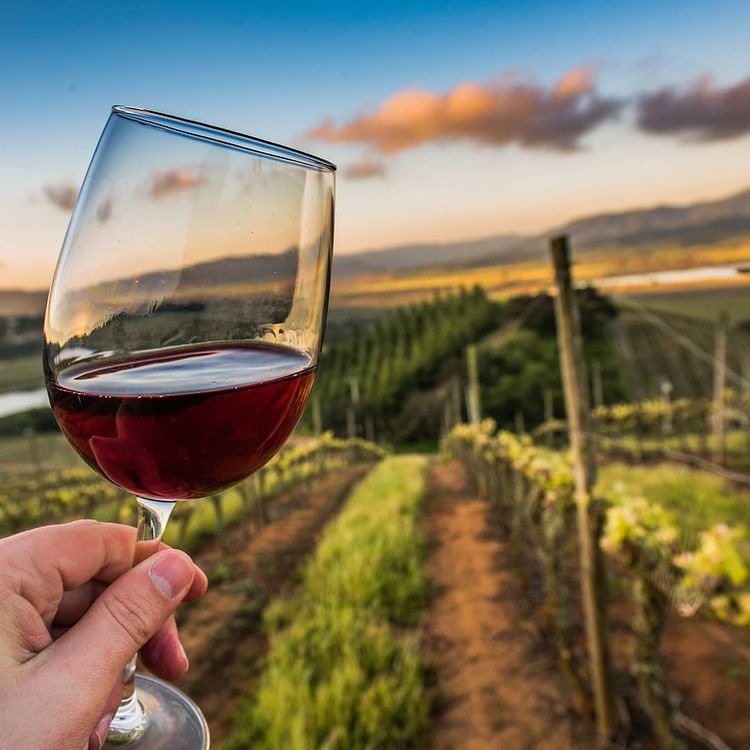
@kingstonvineyards
How to pick a Pinot Noir
After your Grand South America tour, how can you find the best Pinot in your hometown? Courtney’s advice on how to choose Pinot Noir is to travel the world through Pinot. Experience the joy it brings. “When it’s made with intention and purity, that speaks to where it’s from.” Courtney suggests trying Pinots from New Zealand, France’s Burgundy region, Oregon’s Willamette Valley and the central coast of Santa Barbara. “Tasting side by side will help you taste the difference in Pinots from different regions,” she says.
Courtney’s second tip for discovering top quality Pinot Noir is to find and get to know your local wine shop, or even your favorite restaurant. Your local sommelier will be eager to share their favorite wines and you’ll build a relationship that will serve you well as you learn which Pinots you like.

@kingstonvineyards
Lastly, Courtney says, “Find a bottle with a story behind it.” Because Pinot is hard to make on a large scale, those unique bottles from small winemakers will showcase their labors of love. We couldn’t agree more. And with a story like Courtney and her family’s, we’ll be savoring every sip.
Join us in Chile.





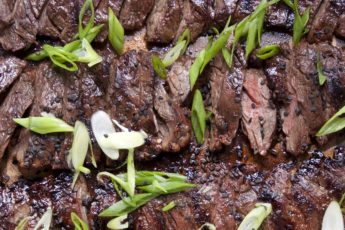





Leave a Comment